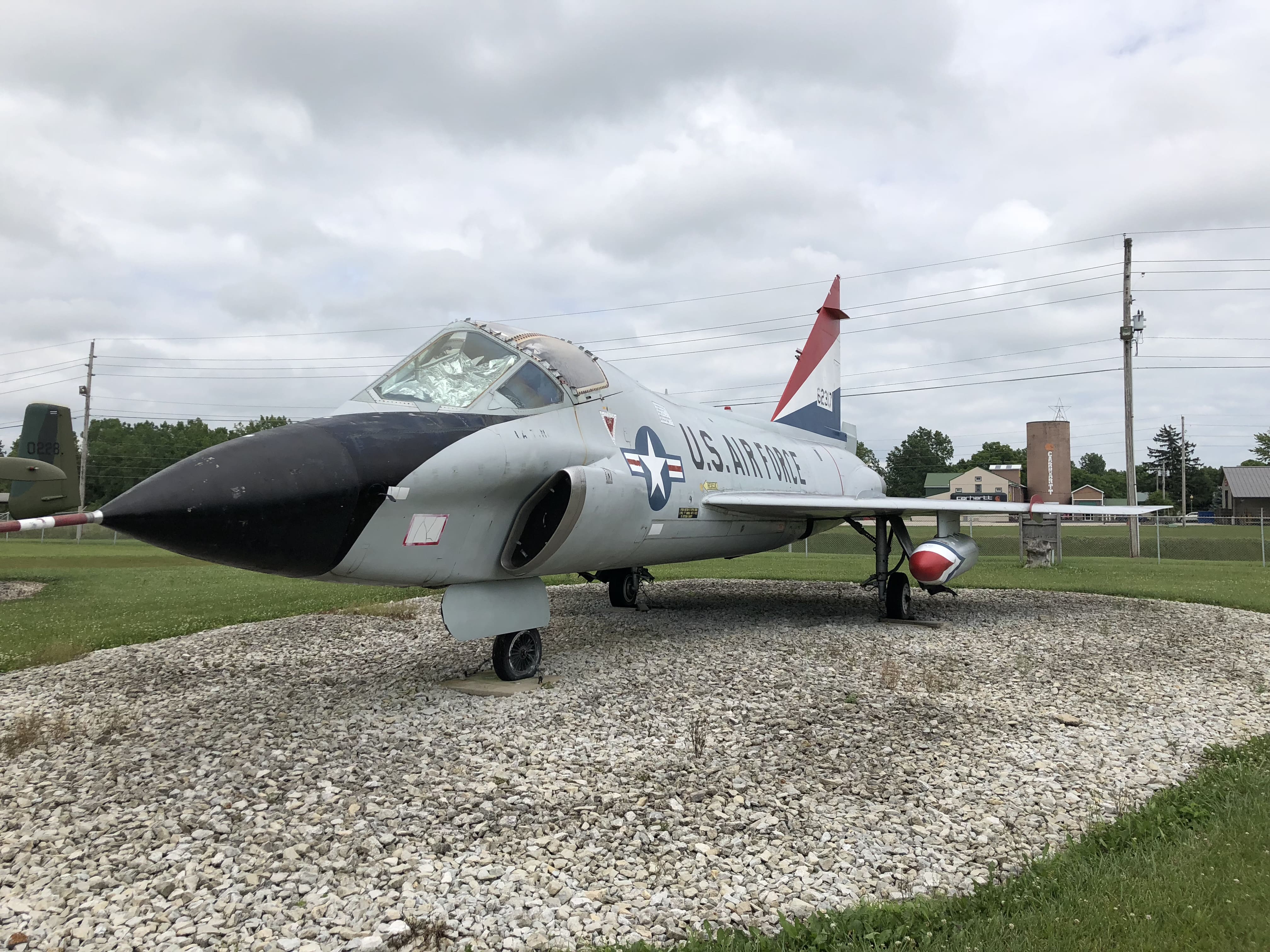CONVAIR TF-102A DELTA DAGGER

Delta-winged aircraft have particular features which endow them with quite different handling characteristics than more conventional aircraft. Among these are a rather high angle of attack during takeoff and landing, and a high induced drag during turning. In order for pilots used to such aircraft as the Northrop F-89 Scorpion and the North American F-86D Sabre to be able safely to transition to the delta-winged F-102A, the Air Force thought that a two-seat trainer version of the Delta Dagger was necessary. The TF-102A two-seat combat trainer was evolved to meet this need.
Work on the two-seat Delta Dagger was done under the aegis of Weapons System WS-201L. The initial authorization of the TF-102A was on September 16, 1953. At that time, problems were still being experienced with the single seat YF-102, and further procurement of the TF-102A was deferred until these difficulties could be ironed out.
In July of 1954, an initial order for 20 TF-102As was placed, with first delivery to be in July of 1955. The TF-102A had a wider forward fuselage that seated two crew members in a side-by-side configuration. The side-by-side seating arrangement was preferred over the usual tandem seating arrangement, in the belief that it would simply inflight training, even in spite of the fact that the broader cockpit would probably have an adverse affect on performance. Because of the new wider cockpit, the lateral air intakes had to be reconfigured. They were reshaped and mounted down lower on the fuselage than on the F-102A. The rest of the airframe was otherwise identical to that of the single-seat F-102A, and the same weapons suite could be carried. However, the Hughes MG-10 fire control system was not fitted.
A mockup of the nose section was inspected in September of 1954. In early 1955, following the successful testing of the revised YF-102A, the Air Force ordered 28 more TF-102As.
The first TF-102A (company Model 8-12) flew on October 31, 1955, with Richard L. Johnson at the controls. It was a brief hop that was cut short because of a faulty canopy seal. A month later, the Air Force gave Convair a letter contract for 150 more TF-102As
Initial testing indicated that the TF-102A’s bulbous cockpit created a severe buffeting problem at high speed. A new cockpit configuration with a cut-down canopy and revised windshield was tested in April of 1956 but it did not seem to help very much. Buffeting was reduced somewhat, but only at the expense of a much poorer landing visibility. Since the aircraft was basically a trainer rather than a combat aircraft, it was felt that visibility had to be favored over speed and the original cockpit design was restored. The buffeting problem was largely cured by adding a set of vortex generators on the cockpit canopy framing in order to provide smooth airflow over the cockpit. In addition, the vertical tail was increased in area. These changes were introduced with the third TF-102A to be accepted by the USAF and were adopted as standard.
Although 111 TF-102As were ordered, only 63 were actually produced. Each F-102A squadron normally included two TF-102A two-seaters on strength. Some TF-102A two-seaters were used on occasion in Vietnam as forward air controllers.
| SPECIFICATIONS | |
| Span: | 38 feet 1 1/2 inches |
| Length: | 63 feet 4 1/2 inches |
| Height: | 20 feet 7 inches |
| Weight: | 27,778 pounds |
| Armament: | 24 unguided 2.75-inch rockets and six guided missiles |
| Engines: | One Pratt & Whitney J57-P-23 turbojet rated at 10,200 lbs. thrust at military power of 16,000 lbs. |
| Crew: | 2 (Pilot and Instructor) |
| Cost: | $1,184,000 |
| Tail Number: | 56-2317 |
| Years in Service: | 1956 – 1975 |
| PERFORMANCE | |
| Maximum Speed: | 646 mph at 38,000 feet (Mach 0.97) |
| Cruising Speed: | 520 mph at 40,000 feet (Mach 0.79) |
| Range: | Without Drop Tanks: 1,105 miles With Drop Tanks: 1,439 miles |
| Service Ceiling: | 55,000 feet |